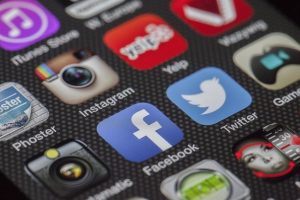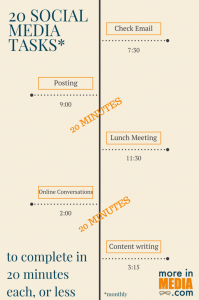1.44 Billion, 300 Million, 302 Million. Those are the estimated number of users on Facebook, Instagram and Twitter respectively. With userbase growth forecasted to remain in double digits for all three networks for the next few years, there is unprecedented potential for marketers to share their brand story on a large and interactive scale.
Let’s back up to explain why the human race has fallen in love with social media. For thousands of years, the human race has passed on and advanced its breadth of knowledge through the telling of stories. From the earliest homo sapiens regaling their youth with tales of a successful hunt to Monday mornings at the water cooler, our appreciation for a well-told story seems to be hard-coded. Research suggests that they activate our brains in ways simple pieces of information cannot, evoking sensory reactions and allowing us to better empathize with those around us. Dr. Paul Zak, a neuroeconomist at Claremont Graduate University, conducted a groundbreaking study in 2013 on how stories actually change our brain and induce behavior change. A chemical (oxytocin) released when we hear them, he noted, induced a staggering 56% increase in donation rates among test subjects.
Stories, however, are (and have always been) a multimedia experience – 90% of the information transmitted to our brains is visual. Even our oldest ancestors understood this fact on a holistic level, using cave paintings to help convey their messages. Far removed from the caves of our forefathers, however, 21st century brands would do well to heed these lessons. Many consumers rate visual brands as being more engaging, and the overwhelming majority prefer clear imagery to product ratings when making purchasing decisions. But we are empathetic, social creatures; we value authenticity, honesty, and seek to make genuine connections. Unsurprisingly, we expect these same qualities from the brands that we purchase from. The age of the polished-product-shot-against-a-white-background is over; authenticity has become the new king, with organic, “Instagram-style” photography the key to unprecedented conversion rates.
Even with the massive amounts of data to back up why content marketing is important, marketers are still having trouble maximizing value from their social media marketing efforts. This is indicated by a recent study, which cited that over 50% of marketers believe that their social media marketing efforts are ineffective. With the opportunity available to cultivate brand loyalists, gain consumer insights and ultimately increase sales, an investment in the following elements can pay dividends for marketers for years to come.
A Picture is Worth 60,000 words:
According to psychologists, the brain is able to process images 60,000 times faster than text. Given the powerful nature of photographs and the visual nature of Facebook and Instagram (with Twitter increasingly becoming visual), it is essential for marketers to leverage the power of the photograph to tell their brand’s unique story. In determining what images to post for social media use, marketers must ask themselves, “am I posting high quality images and are my images authentic?”. If the answer to either is no, its time to go to the drawing board to rethink strategy.
Quick Captioning: One of the major value propositions that social media offers is its ability to provide convenient access to a vast library of information. With so much information competing for the user’s time, it’s important for marketers to utilize short captions. When users browse their social news feed, they are most likely to dismiss long posts. This means that marketers should stick to concise communication tactics to reach their audience.
Harnessing the Hashtag:
Hashtags are a great tool for marketers because it allows users to share content within their own network. A common misperception however is that marketers need to come up with original hashtags in order to gain a following. This is both untrue and unrealistic. The fact is, not every brand can be like Nike and create captivating and original hashtags. Looking at Nordstrom for example, they’ve been able to leverage the oft-used #OOTD (outfit of the day) hashtag for product promotion. The result, a critically acclaimed social media presence with over 3 million Facebook fans, 950,000 Instagram followers and 585,000 Twitter followers.
In short, in order to cut through the noise, brands must be able to tell their stories through authentic, customized imagery – imagery of real people, in their own environment, interacting with the brand’s products and services.
Neither brand stories nor brand imagery are new concepts, but taken together, they can drive intensely personal interactions with your consumers and increase engagement and conversion – vital metrics for success.
(173)




